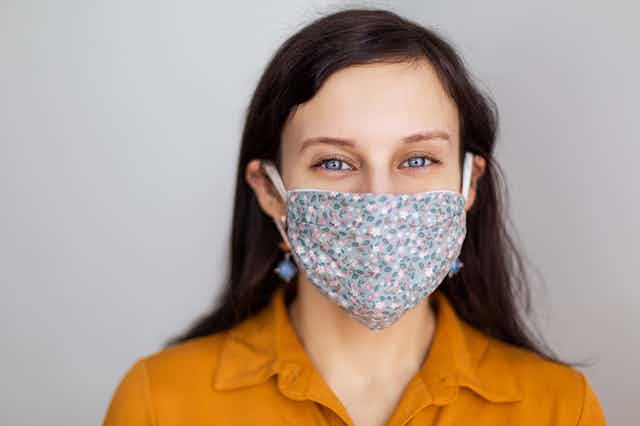Recent headlines suggest that mask wearing has become a signal of political allegiance, with the left choosing to wear masks and the right refusing to. Yet COVID-19 affects people of all political persuasions who, like it or not, share similar biological susceptibility to this disruptive disease.
This is not to say that social factors are not relevant. Early reports trying to understand why ethnicity seems to be a factor have indicated that access to medical care, different living arrangements, work environments and even outdoor spaces make a huge difference to people’s experience and sometimes survival in this pandemic. But there is also a biological reality to this virus that can only be understood and controlled using the conclusions of science.
Broadly speaking, the scientific method gathers observations, proposes hypotheses, and then chooses the best hypothesis based upon the results of careful experimentation. During times of uncertainty, a clear scientifically derived conclusion can be comforting. While various philosophers have questioned this view of science and talk of “weaponising” science may sometimes suggest otherwise, the vast majority of scientifically derived hypotheses are not particularly contentious. Computers, bridges, aeroplanes and painkillers all work regardless of your political persuasion.
But what about face masks?
Last year, as part of a scientific delegation, I attended a tour of the UN designated bio-safety level four laboratory in Switzerland. This laboratory is equipped to handle the most toxic chemical, biological and radiological agents. We were shown displays of face masks and told when and how each is used. Masks ranged from astronaut-style self-contained breathing systems (SCBA) through to simple cloth face coverings.
It was clear from the tour that face masks are an important protective item. But it was also clear that there is a range of types providing different levels of protection. The key is choosing the right type for the right task, often paired with other appropriate safety equipment and operating procedures.
For instance, the increasingly famous N95 mask has a filtration device able to stop 95% of 0.3 micrometre (0.0003 millimetre) particles. Even though the coronavirus is estimated to be about 0.07 to 0.09 micrometres, virus particles are normally carried in droplets somewhat bigger than this, making the 0.3 micrometre limit quite adequate for protecting the wearer when combined with other protective equipment. Contrast this with cloth fibres, of the type you might use for a homemade mask. The gap between most cloth fibres found in the home depends on weave thickness and can be 1,000 times bigger compared with the N95 mask – around 1 to 0.1 millimetres.

But just because cloth masks let a lot more air and particles through compared with N95 masks, does not mean they do nothing. If you have ever wrapped a scarf around your face in the winter you will know that covering your mouth will divert some of your breath around your face (thus not spreading it as far away from you) and also protect you from the cold, normally because some moisture from your breath gets caught in the cloth. It may also inhibit your breathing a bit. So clearly cloth masks will affect both what you breathe in and where your breath goes when you breathe out.
But even so, the most optimistic estimates suggest that cloth coverings only have a minor effect on your chances of breathing in (or expelling) droplets containing a virus. A small study of 21 healthy people concluded that a “homemade mask should only be considered as a last resort to prevent droplet transmission from infected individuals, but it would be better than no protection”.
Although additive effects (combining with physical distancing, frequent hand washing and avoiding crowded spaces) should be considered, the benefits are further complicated by factors such as material type, number of layers, fit, face shape, frequency of adjusting, facial hair and the effect of having a moist and increasingly dirty piece of cloth over your face.
So from the scientific perspective, the evidence does seem fairly clear: a well-designed mask combined with the right safety equipment and behaviour has a protective effect, but homemade cloth face masks are simply too variable to be relied on for protection of yourself or others.
Rationing issue
So, if the science is clear, why is there still a debate? Mostly it is a simple rationing issue. As there is an availability problem, it makes sense that the public are not urged to compete with medical staff for limited supplies of the most effective masks. Promoting alternative face coverings helps to prevent this competition.
Also, this pandemic has created a great deal of fear. The demonstration that you are doing something is better than the helplessness of feeling you can do nothing. Signalling to others that you are taking this seriously and trying to respect their safety as well as your own is, therefore, an important statement of solidarity.

